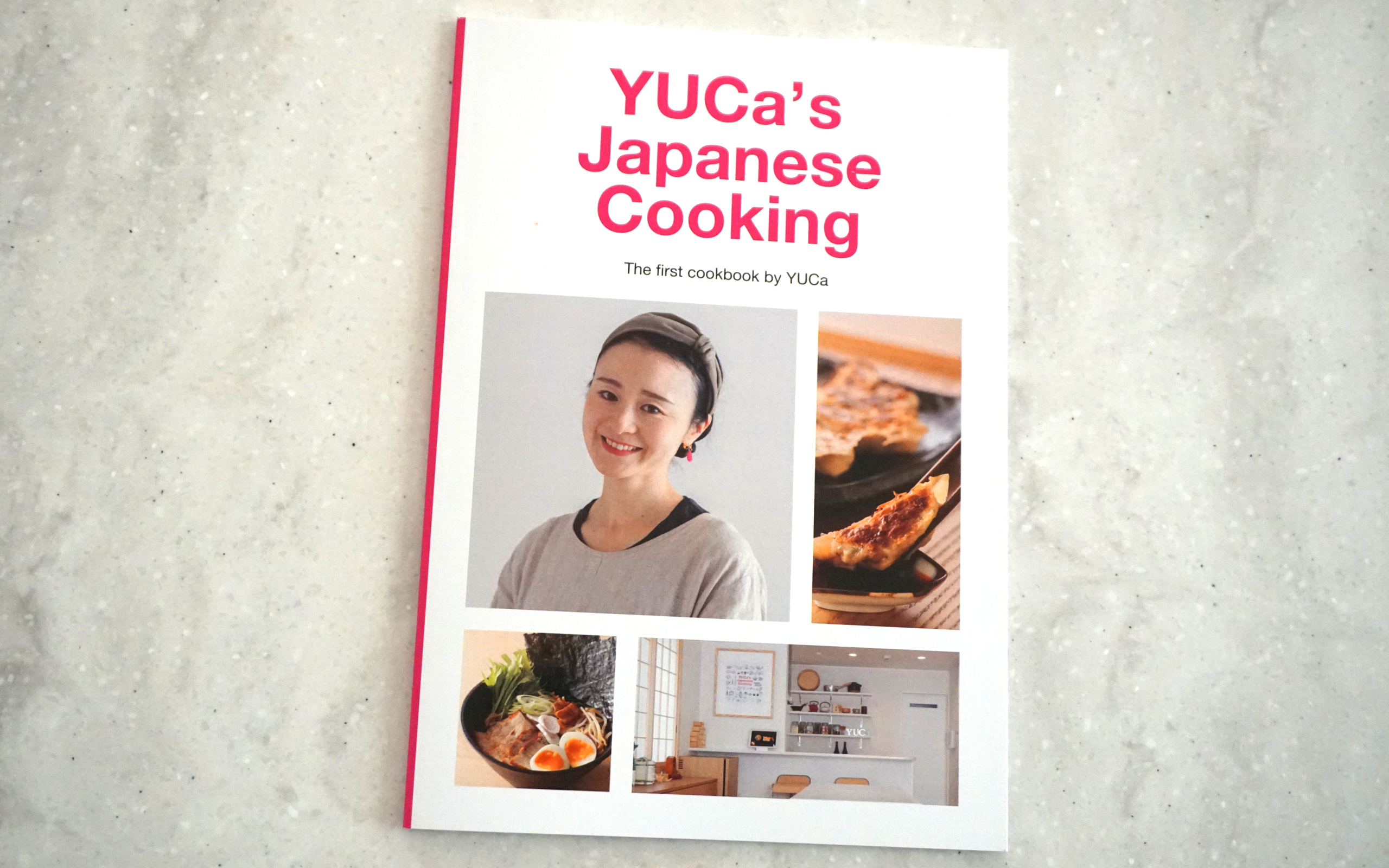Latest Posts
Hello from Tokyo (September 2024)

Summer vacation has ended, and the second semester has begun at Japanese schools. My son, who developed a habit of staying up late during the vacation, now has to wake up an hour earlier than usual, so it will take some time for him to get used to it. Despite this, our children are busy reuniting with their friends after a long break, sharing what they did during the vacation, and playing together.
As for me, I was busy preparing the children’s lunch boxes on weekday mornings, but with school and kindergarten meal services resuming this month, I am starting to feel a bit more relaxed in the mornings.
This month, since the cooking class bookings are quite relaxed, I plan to focus on supporting instructors who are looking to start cooking classes for foreigners, preparing for the launch of the YUCa’s Tea brand site, and writing blog posts about places I visited with my family.
Wishing you a wonderful month ahead!
YUCa
Japan Guide : Nikko Tosho-gu (栃木県)
On the first day of our trip to Nikkō, we visited the SL Railway Museum to learn about the history of steam locomotives when they were still in operation. We also enjoyed some fireworks and other attractions at Kinugawa Onsen. The next day, we visited another popular sightseeing spot, Nikkō Tōshō-gū.

Nikkō Tōshō-gū (日光東照宮) is a famous Shinto shrine located in Nikkō, Tochigi Prefecture, Japan. It was established in 1617 to enshrine Tokugawa Ieyasu, the founder of the Tokugawa shogunate. The shrine is renowned for its elaborate architecture and richly decorated buildings, including the Yomeimon Gate, which is often highlighted for its intricate carvings and vibrant colors.
The shrine complex is set within a beautiful forested area, adding to its serene and majestic atmosphere. It is part of the UNESCO World Heritage Site “Historic Monuments and Sites of Japan,” recognized for its historical significance and artistic heritage.
Key features of Nikkō Tōshō-gū include the famous “see no evil, speak no evil, hear no evil” monkeys carved on the Sacred Stable, the stunning lantern-lined approach, and the elaborate carvings of the Yomeimon Gate. The shrine’s main hall, known as the Honden, is adorned with ornate details and reflects the grandeur of the Tokugawa era. Visitors to Nikkō Tōshō-gū can experience both the spiritual and cultural richness of Japan through its architectural splendor and historical significance.
When visiting Nikko, one must not forget to try the various dishes made with yuba.

Yuba(湯葉) is a traditional Japanese food made from the skin that forms on the surface of soy milk when it is heated. It has a delicate texture and a subtle flavor, often described as slightly nutty or creamy.
Yuba is highly prized for its nutritional value, being rich in protein and low in fat. It can be used in various dishes, both savory and sweet, and is often found in Japanese cuisine in forms such as fresh, dried, or deep-fried. In some regions, it is considered a delicacy and is enjoyed for its unique texture and flavor. We had the chance to enjoy yuba soba and yuba udon. From the soft-textured yuba to the crispy, deep-fried yuba, the variety of cooking methods used was very interesting.
Read More
Japan Guide : Kinugawa Onsen in Nikko (栃木県)
Kinugawa Onsen is a popular hot spring resort located in Nikko, Tochigi Prefecture, Japan. It is renowned for its therapeutic hot spring baths (onsen) and scenic beauty, nestled along the Kinugawa River, which flows through steep, forested gorges. The area has been a favored destination for relaxation and rejuvenation since the Edo period.

Visitors can enjoy a variety of hot spring baths, both indoors and outdoors, offering views of the surrounding nature. Many ryokan (traditional Japanese inns) and hotels provide access to these baths, and some even offer private onsen experiences. The town is also known for its proximity to famous attractions like Nikko’s UNESCO World Heritage sites, including the Toshogu Shrine.
Kinugawa Onsen is easily accessible from Tokyo, making it a convenient getaway for those looking to escape the hustle and bustle of the city and immerse themselves in the tranquil atmosphere of Japan’s natural landscapes.

Read More
Tokyo Guide : Hatoya Asakusa
Hatoya is a Japanese tea stand where you can enjoy carefully selected Japanese teas, lattes, and sweets made from only the finest teas in Kyoto.

The owner, Nobuhiro Maruyama, originally came from the coffee industry and worked as a barista for 10 years. After encountering a cup of Gyokuro tea, he became fascinated by the world of Japanese tea. He then trained at a Japanese tea company before opening the first Hatoya location, Hatoya Ryouyousha, in Arashiyama, Kyoto, in 2019.

In addition to the Kyoto location, Hatoya has stores in Tokyo and Kamakura. My family and I recently visited Hatoya Asakusa, located behind Sumida Park in Tokyo.
The signature item, the Matcha Latte, is topped with homemade matcha ice cream made with an Italian gelato machine. The vibrant green color and the exquisite flavor of the high-quality matcha were truly captivating.

They also offer a variety of matcha-based baked goods and unique sweets like Half-Baked Matcha and Fresh Matcha Terrine. Whether you’re a matcha lover or looking for a unique souvenir, I highly recommend stopping by when you visit Asakusa!

Related video :
Tokyo Guide : Vegan Ramen Shop T’s Tantan
The world of ramen is becoming more diverse. While traditional ramen often uses a lot of animal-based ingredients, high-quality vegan and vegetarian ramen options are definitely on the rise.

Vegan ramen often relies on dashi made from kombu (kelp seaweed) and shiitake mushrooms, along with various vegetables to create a deep umami flavor. For example, a broth based on kombu and shiitake mushrooms offers a rich taste without using animal products. Plant-based seasonings and spices are also used to achieve a well-rounded flavor.
Moreover, there are creative uses of ingredients like soy milk or nuts to make creamy broths, and toppings like tempeh or tofu to provide protein. These innovations result in ramen that is visually appealing and flavorful, without losing to traditional options in taste.
The growing popularity of vegan and vegetarian ramen means that there are more diverse choices available, which is a wonderful development for ramen enthusiasts. In this article, I would like to introduce one of the popular vegan ramen shop in Tokyo.

T’s Tantan (T’s たんたん) is a popular vegan ramen restaurant originating from Japan, known for offering Japanese-style tantanmen(坦々麺) based on Sichuan cuisine’s dandan noodles, all made from plant-based ingredients.
Read More
Ramune (ラムネ)
Ramune(ラムネ) is a popular Japanese carbonated soft drink known for its unique bottle design, particularly the Codd-neck bottle sealed with a marble.

The word “ramune” is derived from the English word “lemonade,” reflecting its original citrus flavor, although today it comes in many varieties like strawberry, melon, and lychee.
The bottle’s defining feature is a glass marble that acts as the seal. To open the bottle, you push the marble into a chamber below the bottle’s neck. The marble is then trapped there and creates the iconic “clinking” sound when drinking.
Read More
Hello from Tokyo (August 204)

It’s hot and humid from morning here in Tokyo. I’m staying hydrated, keeping up my iron levels, and getting good sleep!
Everyone, be careful not to get summer fatigue! Have a wonderful August!!! YUCa
Tokyo Guide : HIYAKASHI IPPODO TEA
IPPODO TEA, a long-established Kyoto tea house, is hosting a limited-time café called “Hiyakashii IPPODO TEA” in Omotesando, running until September 30th.

At the entrance, there’s a noren (traditional Japanese curtain) with a green ghost-like character on it. Instead of being scary, it has a kind of amusing and intriguing vibe.
As you part the noren and step inside, you’re greeted by a space inspired by Kyoto’s bamboo paths. It feels like you might encounter a ghost!
The café also offers an English menu, so international visitors can enjoy it too.

We ordered the following:
Read More
Yokan (羊羹)
Yokan (羊羹) is a traditional Japanese confection made from azuki red bean paste, agar (a plant-based gelatin), and sugar.

It has a smooth, firm, jelly-like texture and is typically enjoyed as a sweet treat with tea. Yokan is often shaped into rectangular blocks and comes in two main varieties: neri yokan(練り羊羹), which is firm, and mizu yokan(水羊羹), which has a softer, more delicate texture due to higher water content, making it a popular choice in the summer.

There are also variations that include ingredients like chestnuts, sweet potato, or green tea flavoring. Yokan has a rich, mildly sweet taste, and its simple ingredients have made it a beloved dessert in Japanese culture for centuries. It is also appreciated for its long shelf life, which makes it a popular gift or travel souvenir.
Read More
15 Places to go in Tokyo
YUCa’s Japanese Cooking has been selected as one of the 15 places to go in Tokyo in the Toei Transportation Guide issued by Toei Transportation!

Toei Transportation is managed by Tokyo Metropolitan Government. Toei Transportation provides Toei Subway (4 lines) , Toei Bus (127 routes), Tokyo Sakura Tram (Toden Arakawa Line), and Nippori-Toneri Liner services, which form an extensive network that ensures convenient mobility throughout Tokyo.

Below are the details of the 15 places to visit in Tokyo!
1. Wear a kimono @waraku_asakusa
2. Ninja experience @ninjatrickhouse
3. Enjoy Japanese tea @happoen
4. Make an Edo Kiriko glass @sokichi_asakusa
5. Make Japanese dishes @yucasjapanesecooking 🙇♀️

Read More






























